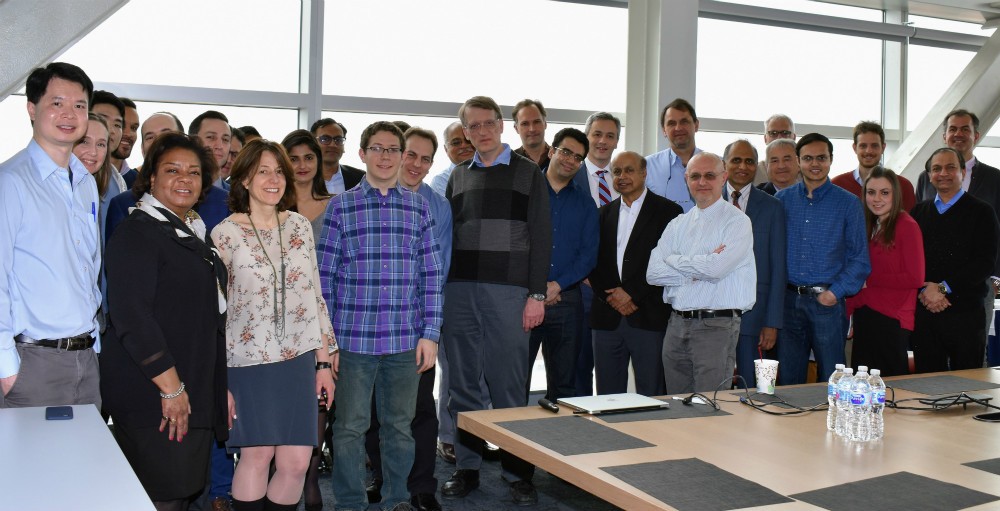National Science Foundation Announces West Harlem as Wireless Testbed

In April 2018, the National Science Foundation (NSF), under its Platform for Advanced Wireless Research (PAWR) initiative, formally announced the West Harlem area as its wireless testbed for the next wave of mobile technology. The $22.5 million grant was awarded to a New York City–based university team— consisting of Rutgers University, Columbia University (CU), and New York University—that will partner with New York City, Silicon Harlem, City College of New York, and the University of Arizona to develop the Cloud Enhanced Open Software Defined Mobile Wireless Testbed for City-Scale Deployment (COSMOS) project. The testbed will cover one square mile in the West Harlem area, with City College to the north, Columbia University’s Morningside campus to the south, the Hudson River to the west, and the Apollo Theater to the east.
By 2020, the number of internet-connected devices is expected to grow to 20 billion, creating an urgent need in the U.S. and abroad for infrastructure that can rapidly process all that data. To improve networking speeds, the COSMOS network will tap previously unused radio spectrum bands and integrate optical fibers underground with radio antennas and other equipment on city rooftops and light poles. The high-bandwidth network is expected to allow applications to transmit data faster than one gigabit per second, improving performance tenfold over current wireless networks. To achieve this high level of performance, data processing will be handled by on-site “edge cloud” servers rather than in far-off data centers. “We are excited about the opportunity to develop the next generation of wireless networking here in West Harlem,” said Gil Zussman, professor of electrical engineering and a member of the Data Science Institute, who leads Columbia’s part of the project, adding, “we will aim to design about 20 next-generation ‘handsets’ for technology demonstrations in schools and the community at large.”
Community partner Silicon Harlem (SH) sees their organization’s mandate to bring technological innovation to all of Harlem. Clayton Banks, cofounder of SH, refers to the COSMOS project as one that will “bridge the digital divide that plagues the Harlem area.” Community support was an important part of the COSMOS grant application. CU’s Office of Government and Community Affairs, along with scientists and other team representatives, visited Community Boards 9 and 10 and area school principals, as well as the superintendent of Community School Districts 3 and 5, to discuss the project. As a result, the COSMOS application included over 60 letters of support from community stakeholders.
In one of these letters, Kevin Young, director of the Schomburg Center for Research in Black Culture, articulated the sentiments of most constituents by saying, “we believe that participation in the COSMOS project will expose our organization to new wireless technology and service options that can later be reflected in our daily work.” The abundance of support from the West Harlem community will provide a strong foundation as the testbed is strengthened by actual usage and real-life applications of its capabilities.
While there was much enthusiasm about the COSMOS project, some concerns did arise. Many wondered whether it might impact their current wireless network—it won’t. The network will run alongside existing networks and will not interfere with other signal transmissions. Others were concerned with how the testbed might be impacted by net neutrality, should it become an issue in the future. Residents were relieved to learn that COSMOS’s wireless research traffic will not be throttled by business deals. There will be regular briefings to address questions about the project going forward.
Although it has a five-year life span, the benefits of the COSMOS project will be realized as early as this summer. In phase one of the COSMOS education plan, teachers from Community School District 5 will work with researchers from the team on CU’s Morningside campus to develop web-based laboratories/projects to use in their classrooms in the upcoming school year. The partnership will extend beyond the summer as the researchers visit the respective classrooms, and teachers and students visit CU labs. The teachers will be encouraged and supported in their efforts to present the labs they develop at regional or national meetings and/or publish in science education journals.
This project is extraordinary in its reach. Its multifaceted approach brings together the intellectual resources of the world’s finest academic institutions, the financial resources of the NSF and the wireless industry, and the physical resources of the West Harlem area to prepare for the next wave of mobile technology.
For more information on the COSMOS project, contact Flores Forbes at [email protected] or Victoria Mason-Ailey at [email protected].
This article was originally published in the Spring/Summer 2018 issue of The Columbia Newsletter.